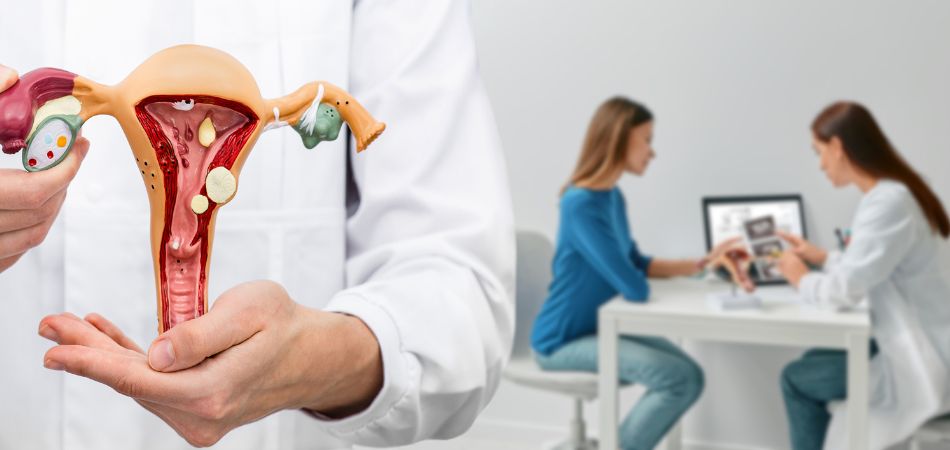Uterine fibroids are a common health concern affecting many women, often leading to uncomfortable symptoms such as heavy menstrual bleeding, pelvic pain, and reproductive challenges. While there are various treatment options available, Uterine Fibroid Embolization (UFE) has emerged as a minimally invasive and highly effective alternative to traditional surgical interventions. In this comprehensive guide, we will explore the various aspects of Ufe Treatment Fibroid Embolization, shedding light on the procedure's benefits and how women can maximize them for optimal outcomes.
Understanding Uterine Fibroid Embolization
Uterine Fibroid Embolization, also known as UFE or UAE (Uterine Artery Embolization), is a non-surgical procedure designed to treat uterine fibroids. The procedure involves the injection of small particles into the arteries supplying blood to the fibroids, thereby blocking their blood flow. This results in the fibroids shrinking over time, alleviating symptoms and improving the overall quality of life for affected women.
Benefits of UFE Treatment
- Minimally Invasive Nature:
One of the primary advantages of UFE is its minimally invasive nature. Unlike traditional surgical approaches such as hysterectomy or myomectomy, UFE is performed through a small incision in the groin area, avoiding the need for a large abdominal incision. This minimizes the risk of complications, reduces recovery time, and allows for a quicker return to normal activities.
- Preservation of the Uterus:
Unlike hysterectomy, which involves the removal of the entire uterus, UFE allows for the preservation of the uterus. This is particularly important for women who wish to retain their reproductive capabilities or those who are not ready for surgical removal of the uterus.
- Effective Symptom Relief:
UFE has been proven to effectively alleviate symptoms associated with uterine fibroids. Studies have shown significant improvements in menstrual bleeding, pelvic pain, and pressure after undergoing UFE treatment. Many women experience a noticeable enhancement in their overall quality of life post-procedure.
- Shorter Recovery Time:
The recovery time associated with UFE is typically shorter compared to traditional surgical interventions. While individual experiences may vary, many women can resume normal activities within a week or two, making UFE an attractive option for those with busy lifestyles.
- Low Risk of Complications:
UFE is generally considered a safe procedure with a low risk of complications. The minimally invasive approach reduces the likelihood of infection, and the risk of significant blood loss is minimized by the targeted embolization of the fibroid-feeding arteries.
Maximizing the Benefits: A Step-by-Step Guide
- Consultation and Evaluation:
The first step in maximizing the benefits of UFE is a thorough consultation with a healthcare provider specializing in interventional radiology. During this consultation, the physician will assess the size, number, and location of the fibroids, as well as the severity of symptoms. This evaluation helps determine whether UFE is a suitable option for the individual.
- Informed Decision-Making:
Empowering patients with information is crucial for making informed decisions about their healthcare. Understanding the potential benefits, risks, and alternatives to UFE allows individuals to actively participate in the decision-making process. Open communication with the healthcare team ensures that patients have realistic expectations and are prepared for the procedure and recovery.
- Preparation for the Procedure:
Before undergoing UFE, patients may be advised to undergo imaging tests such as MRI or ultrasound to provide detailed information about the fibroids. Additionally, pre-procedural instructions, including fasting and medication adjustments, will be provided to ensure a smooth and safe experience.
- The UFE Procedure:
During the UFE procedure, patients are typically given a mild sedative to relax and a local anesthetic to numb the groin area. A small incision is made, and a catheter is threaded through the blood vessels to reach the uterine arteries. Small particles are then injected to block the blood flow to the fibroids. The entire procedure is monitored using imaging technology to ensure precision.
- Post-Procedure Recovery:
Following UFE, patients may experience mild discomfort, cramping, or nausea, which can be managed with medication. Most women can return home on the same day or the day after the procedure. It is essential to follow post-procedure care instructions provided by the healthcare team, including rest, hydration, and avoiding strenuous activities.
- Follow-up Care and Monitoring:
Scheduling routine follow-up sessions with the healthcare practitioner is essential for tracking advancement and resolving any issue.. Follow-up imaging may be recommended to assess the size and condition of the fibroids. Open communication with the healthcare team ensures ongoing support and the prompt identification of any issues.
- Fertility Considerations:
For women with fertility concerns, it is essential to discuss family planning goals with the healthcare team before undergoing UFE. While UFE preserves the uterus, its impact on fertility is a consideration that should be addressed during the consultation. Individuals desiring future pregnancies may need additional discussions about family planning options and potential fertility preservation measures.
- Embracing a Positive Mindset:
A positive mindset can significantly contribute to the overall success of UFE. By focusing on the potential for symptom relief and improved quality of life, individuals undergoing UFE can approach the procedure with a sense of optimism. Practices such as mindfulness, meditation, and positive affirmations can aid in cultivating a positive mental attitude throughout the treatment journey.
Conclusion
Uterine Fibroid Embolization stands as a transformative option for women seeking relief from the symptoms of uterine fibroids without undergoing major surgery. By understanding the benefits of UFE and actively participating in the treatment process, women can maximize the positive outcomes of this minimally invasive procedure. From the initial consultation to post-procedure recovery and follow-up care, each step plays a vital role in ensuring a successful UFE experience and a significant improvement in quality of life. Ultimately, UFE empowers women to take control of their health and well-being, providing a path to a life free from the burdens of uterine fibroids.





Comments